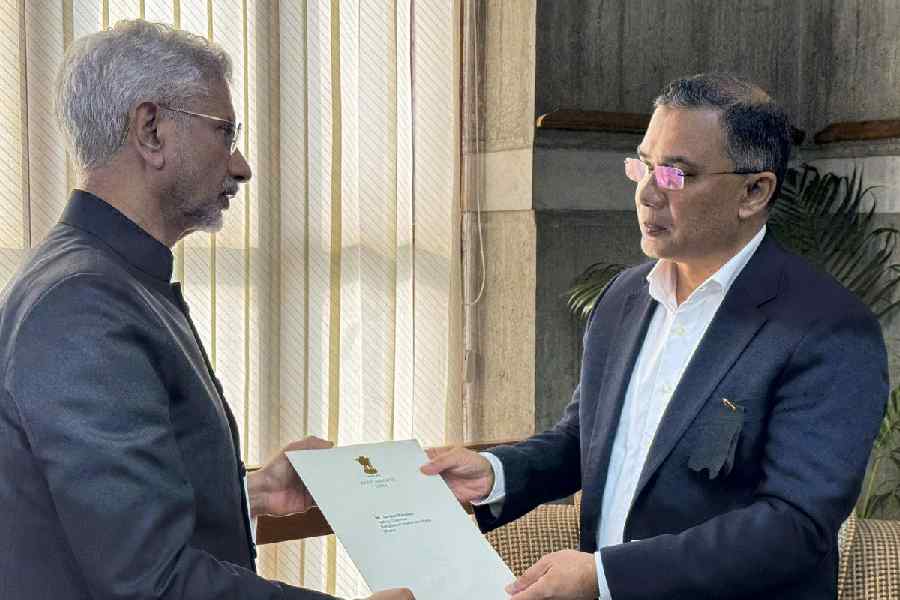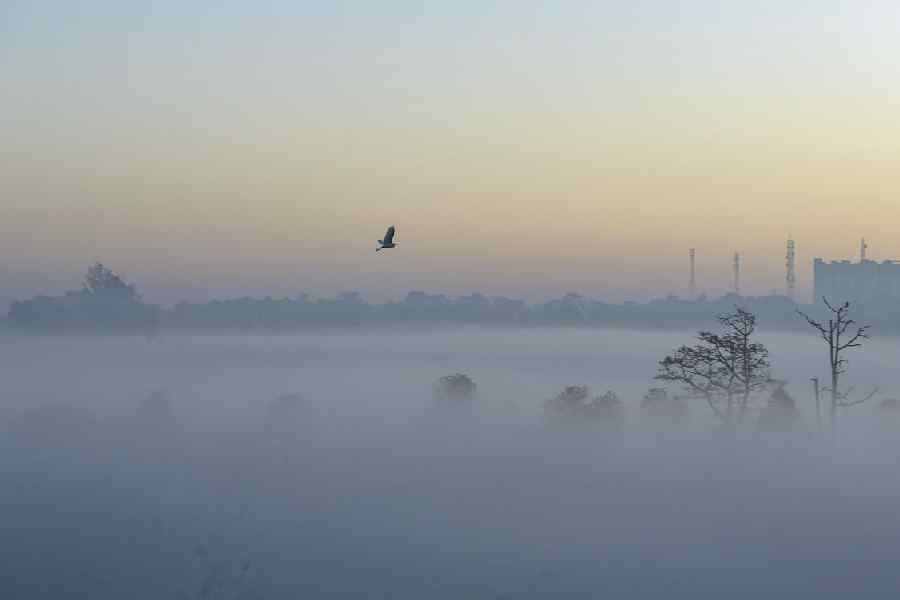 |
Bhubaneswar, Oct. 10: Mahendragiri is an ideal getaway not only for nature-lovers, but also for those interested in history.
It is also a place of pilgrimage because of the Shivratri celebrations held here, which attract a large number of visitors. This is one place that has something for all kinds of tourists.
Mahendragiri in Gajapati district is surrounded by forested hills on three sides. From the top of hills such as Singaraj (1,516 metre), Mahendragiri (1,501 metre) and Devagiri (1,392 metre), you can see the Bay of Bengal. These forests are home to peacocks, flying squirrels, giant squirrels, elephants, spotted deer, leopards, wild boar, mouse deer, golden geckos, pied horn bills, grey horn bills and mynas.
River Mahendratanaya flows down the hills in the east through Mandasa and converges with the Bay of Bengal at Barua, which was once an ancient port.
Mahendragiri is the foremost of the seven “Kulagiris” or principal mountains of India. It has been referred to in ancient literature, accounts and epigraphy. It finds mention in the works of poets Kalidas and Oriya poets Sarala Das and Radhanath Ray.
The hill has a very rich and varied biodiversity, including 642 species of flowering plants, of which 37 species are orchids, 58 species of flowerless plants and five species of lichens among various other species. The kind of lichens found here are not found in the Eastern Ghats and are important from both ecological and medicinal points of view.
Paralakhemundi divisional forest officer (DFO) Jitasatru Mohanty said: “Mahendragiri is replete with biodiversity, species from the Himalayas, Western Ghats and the Nilgiris of south India being found here. Out of 32 plant species identified for conservation, cultivation and sustainable commercial exploitation by the National Medicinal Plants Board, at least 15 species are available in the Mahendragiri ecosystem. It is also treated as a major hub for traditional knowledge on the use of plants and its products of both medicinal and socio-ecological importance which is still untapped. At least 300 medicinal plants are available in the Mahendragiri ecosystem.”
A team of researchers, including ecologist Prasad Kumar Dash, herpetologists Pratysh Mohapatra and Niladri Kar, wildlife expert Satyanarayan Mishra and anthropologist Suvendu Acharya, carried out an assessment study of the hill area in collaboration with the forest department. They found that the entire hill range of about 5,000 sqkm is in very bad shape as the vegetation cover has become thin except in the valleys due to human and lack of alternative livelihood.
“The Mahendragiri Hill Complex is an Entity of Incomparable Value because of the presence of an unique biodiversity and cultural entities. A conservation assessment and management priorities survey in 2007 indicated that about 41 medicinal plants, very commonly growing earlier in Orissa, have come under the Red data list (critically endangered, endangered, rare and vulnerable) and all such species are still abundant in Mahendragiri,’’ said Sundara Narayan Patro, working president of Orissa Environmental Society.
According to Patro, the archaeological structures here, including the Bhima, Yudistir and Kunti temples, which enjoy the status of protected monuments under the Antiquate Monument Archaeological Remains and Sites Act 1958, are also under threat. These temples are believed to have been established between the fourth and the 10th century AD.
“Saoras are the main tribe in these hill forests, but they come under vulnerable tribal group,’’ the environmentalist said.
The Wildlife Institute of India (WII), in one of their reports, “Planning a Wildlife Protected Area Network in India”, recommended the setting up of a sanctuary covering 50 sqkm on the basis of phyto-geographic affinities in north, northeastern and southeastern India. Further, it was suggested that the coverage be enlarged in keeping in view a wider perspective, by establishing a biosphere reserve (BR) to encompass the entire hill area with the sanctuary as its core. At present, a mini-BR has been set up in the foothills of Mahendragiri near Kainpur covering a meagre area of 21.85 sqkm. Patro is of the view that this should be extended to over 5,000 sqkm.
“It is high time the Mahendragiri Hill Complex is accorded the status of a heritage site and a biosphere reserve is set up for its integrated development as well as the development of the socio-economic condition of the people living in and around it. The state forest department should submit a proposal to Unesco to include the hill complex in the list of the country’s heritage sites,’’ Patro added.
“Mahendragiri was known as a place where the Pandavas stayed for a short time. The process of making Mahendragiri hill complex a biosphere reserve has already started. More than 2,000 people visit Mahendragiri every year. But since most of them come for a short visit, elaborate accommodation facilities are not available. There is a small forest rest house near Kainpur which can accommodate just four persons,’’ DFO Jitasatru Mohanty said.
There are three temples on the top of the hill. These temples are named after the Pandavas and their mother Kunti. Oriya Mahabharata author Sarala Das attributes the establishment of the Gokarnesvara Sivalinga to Pandavas, who are said to have visited Mahendragiri during their exile.
The Kunti temple is 30-ft high and is at one end of the flat top of the hill. The temple has been plastered with lime after thorough repairs. The “parsvadevatas” include Ganesha, Kartikeya and Pravati. The “nabagrahas” are placed on the lintel over the door jambs. Two inscriptions that may be paleographically placed in the 12th century are found here.
The Yudhisthira temple that rises abruptly from the ground level is in the “Triratha” style and is on the other side of the hill’s flat top. The outer walls are devoid of any sculptural decoration excepting four Chaitya arches. There is no “parsvadevata” here. The lintel of the door contains an inscription of the Chola dynasty.
The Bhima temple is assumed by scholars to have been built just after the Gupta period and appears to be the oldest of these temples.
It is made of five huge square blocks of stones and has a low and squat tower, square sanctum, squat “sikhara” and flat roof. The doorway is narrow and the walls do not have any niche. This temple is often regarded as the Gokarnesvara temple of the place.











